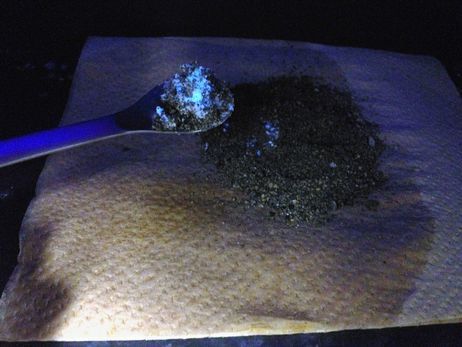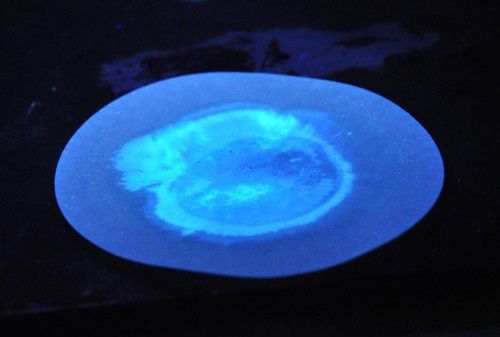
information about Fukushima published in English in Japanese media info publiée en anglais dans la presse japonaise
23 Décembre 2012
http://ajw.asahi.com/article/0311disaster/fukushima/AJ201212230009
December 23, 2012
TSUKUBA, Ibaraki Prefecture--Researchers at the National Institute of Materials Science have developed a spray that can help detect radioactive cesium, potentially providing an efficient new tool for workers involved in decontamination work.
Workers spray the liquid on a material needing testing and then turn on an ultraviolet lamp. If radioactive cesium is present, it glows with a bluish-green light.
"After more in-depth studies on its effect on humans and the environment, we hope to produce the product commercially within two to three years," said a member of the research team.
The liquid comprises three common chemicals found in retail outlets, including ethylene glycol, which is used in antifreeze. The reagents are mixed together and dissolved in alcohol to create a sprayable consistency.
The test can detect minute traces of cesium. It can even be used to confirm in which organs of a fish the potentially harmful isotope has accumulated.
It currently costs about 2,500 yen ($30) to create the liquid needed to test one square meter of soil for cesium contamination. However, officials said the cost could come down to a few tens of yen under mass production. The ultraviolet lamps needed similarly run to several thousands of yen

Dirt containing cesium gives off a blue-green light when illuminated with ultraviolet rays after being sprayed with a liquid developed by researchers. (Provided by National Institute of Materials Science)
December 21, 2012

Cesium glows pale blue under ultraviolet light after being sprayed with a new chemical compound. (Mainichi)
http://mainichi.jp/english/english/newsselect/news/20121221p2a00m0na003000c.html
Japanese scientists unveiled a chemical compound on Dec. 20 that causes cesium to glow pale blue when exposed to ultraviolet light -- possibly making detection and cleanup of the radioactive element from the Fukushima nuclear disaster more efficient.
"We can now confirm contaminated spots that hitherto went undetected, and also bring down decontamination costs significantly," said Taizo Mori, a researcher at the National Institute for Material Science (NIMS) in Tsukuba, Ibaraki Prefecture, where the compound was developed.
Cesium 137 was one of the primary radioactive contaminants released in the nuclear disaster, triggered by the March 2011 Great East Japan Earthquake and tsunami.
The NIMS research team created the compound from three chemicals including nitrobenzene. The compound molecules form chains that then bind to cesium ions. The team diluted the compound in alcohol and sprayed it on cesium grains sprinkled on a sheet of filter paper, and found that the cesium-contaminated parts of the paper glowed when hit with ultraviolet light.
The researchers furthermore confirmed that contaminated areas could be determined to the nearest millimeter using the compound, which if put to use in decontamination operations would mean being able to detect cesium concentrations of about 1,000 becquerels per kilogram of contaminated soil. NIMS will now partner with a private sector firm to develop a camera that can see even low cesium concentrations in the field.
The compound used in the NIMS experiment cost some 20,000 yen per gram, but the researchers say that could be reduced to just dozens of yen if the compound was mass-produced.
Commenter cet article